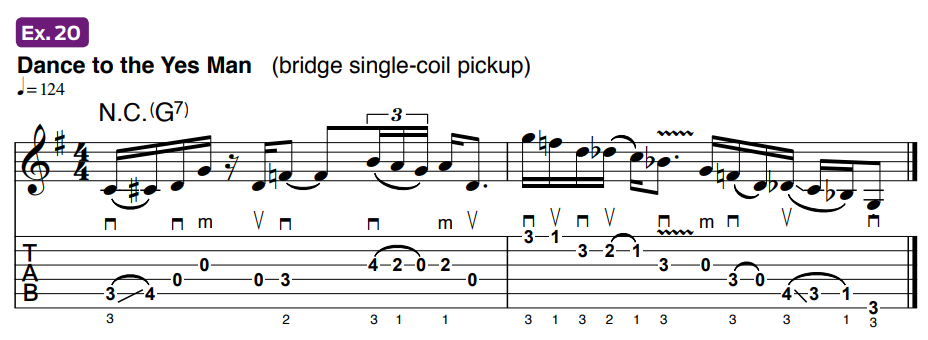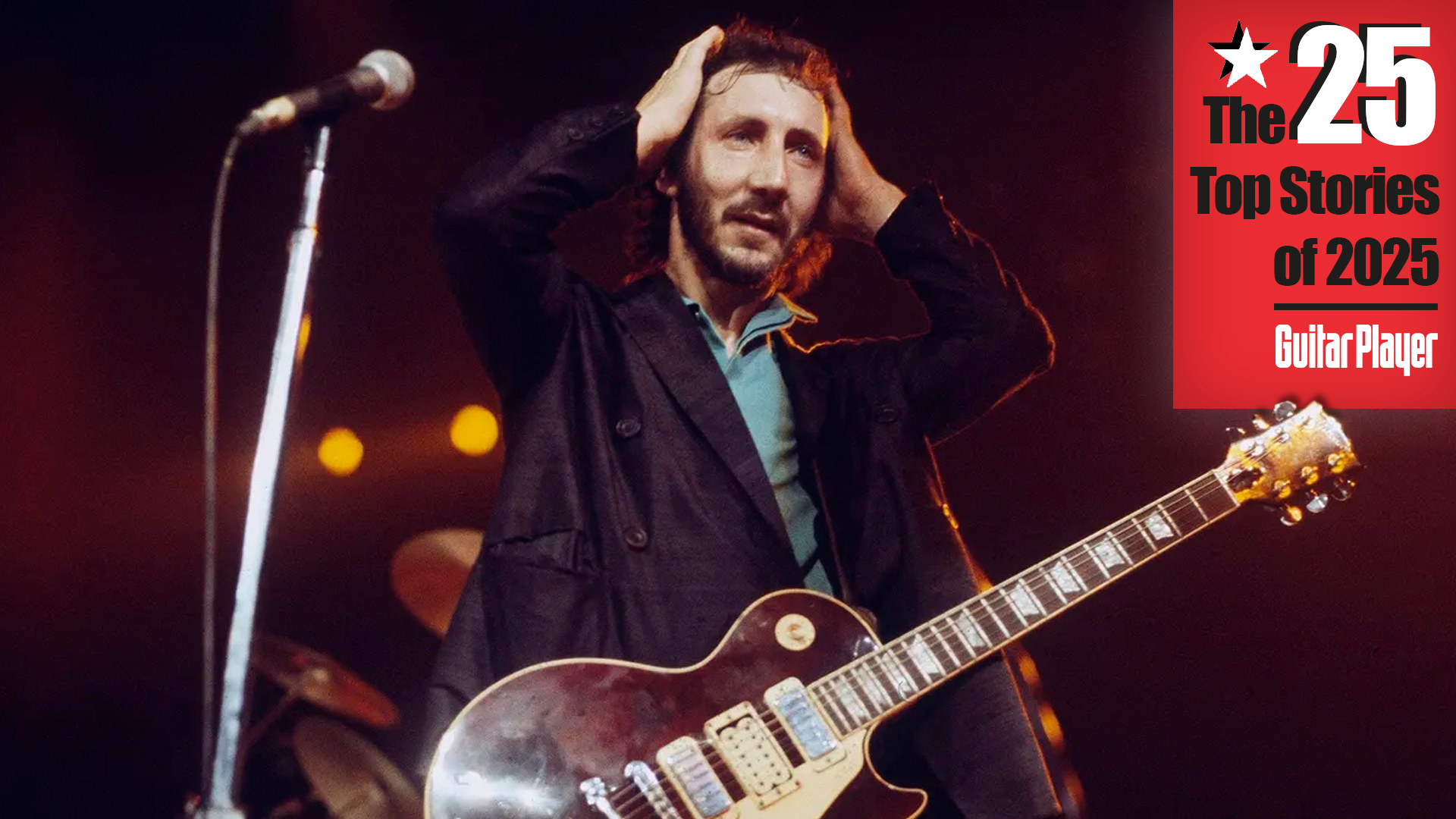
It’s a natural rite of passage for a fledgling guitarist to finally venture out of the familiar confines of the so-called “open position” (formally 1st and 2nd positions) and into the wild frontier of barre chords and boxed scale patterns.
And for many, it’s such a proud moment that they never turn back, forever shunning the “baby pool” of elementary guitar playing.
If these players only knew what they’re missing!
The open position can be fertile ground for cultivating juicy riffs and licks for all occasions, thanks to the superlatively rich, ringing tonal character of the open strings and notes fretted within the first five frets, and the added fingering options that the open strings present.
So let’s roll up our pants-legs and wade into the shallow end of the pond!
BEYOND COWBOY CHORDS
We’ll start the ball rolling with a few examples based on standard open-chord voicings, commonly referred to as “cowboy chords.”
Ex. 1 (Rebel Meets Gloria) is a mashup of “Gloria,” as recorded by Them and the Shadows of Night, and David Bowie’s “Rebel Rebel.”
All the latest guitar news, interviews, lessons, reviews, deals and more, direct to your inbox!
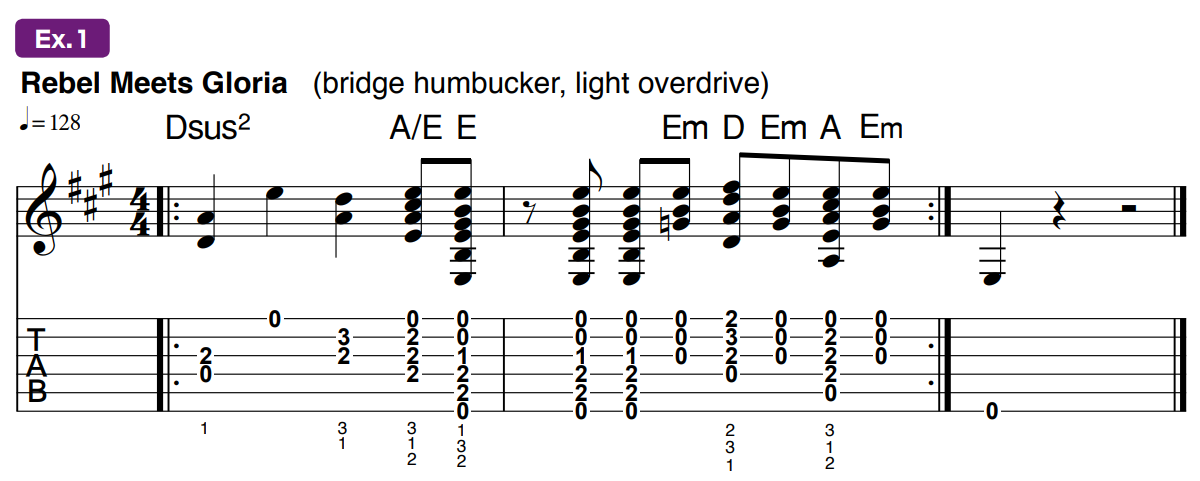
Basic E, A and D chords provide the foundation, while the open Em strums, used as a super-convenient “all-purpose passing chord,” produce the “garage-band” flair.
The following two riffs are both based on open D, Cadd9 and G chords.
Inspired by both Lynyrd Skynryd’s “Sweet Home Alabama” and Third Eye Blind’s “Semi-Charmed Life,” Ex. 2 (Semi Home Sweet Home) mixes broken chord partials with big, fat voicings.
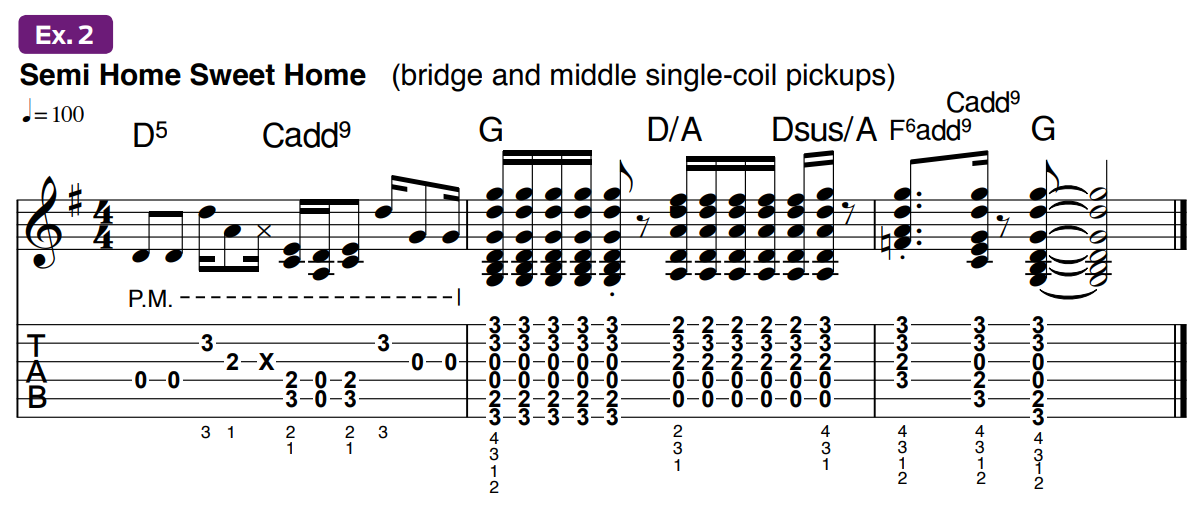
Ex. 3 (Mr. Boston Petty) is an electric 12-string example that combines elements of the Byrds’ “Mr. Tambourine Man,” Boston’s “More Than a Feeling” and Tom Petty and the Heartbreakers’ “The Waiting.”
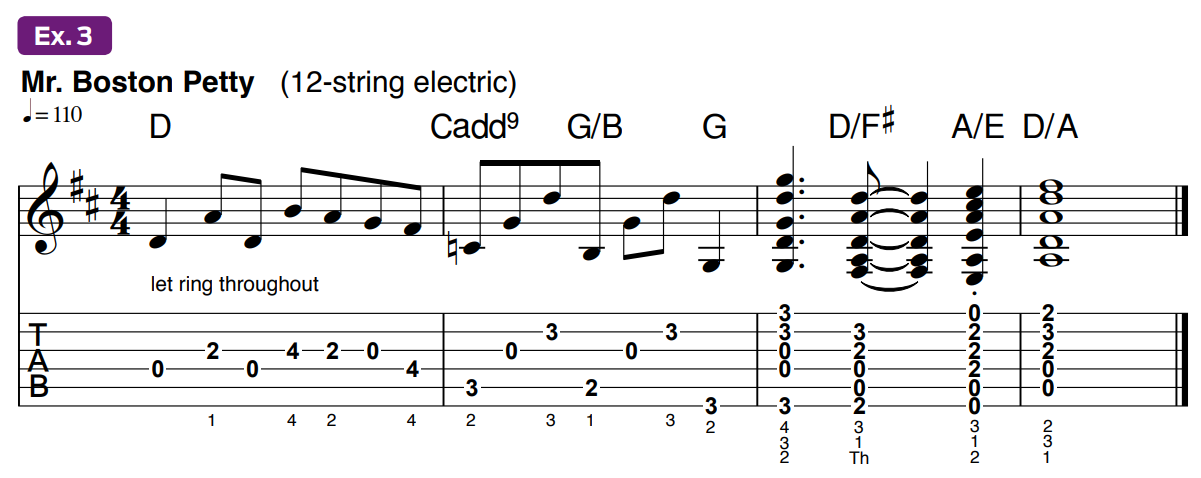
Although this example really comes to life on 12-string, you can approach that kind of shimmer on a standard six-string guitar by using a light chorus effect.
Ex. 4 (House) utilizes one of the chord passages from the timeless folk song “House of the Rising Sun.”
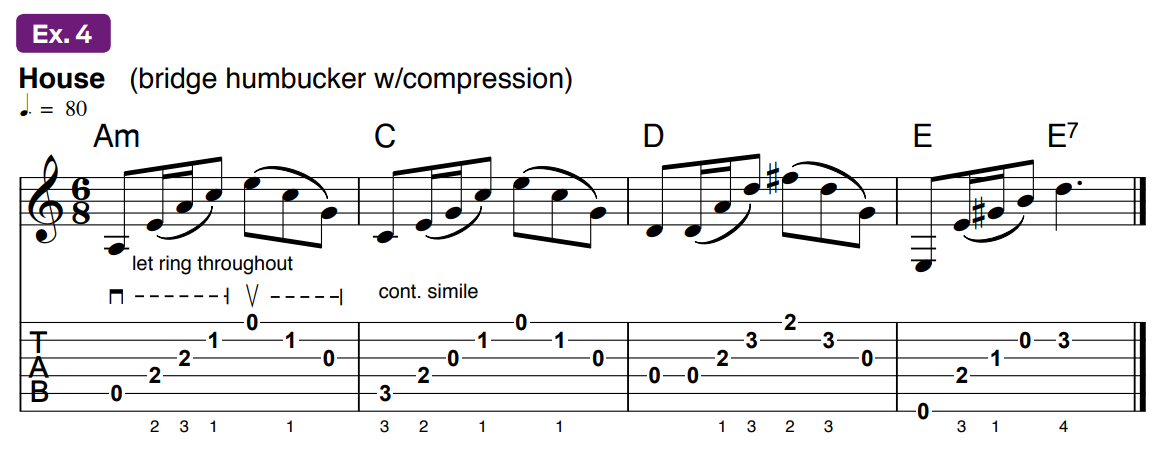
While there have been countless recordings of this traditional piece, this example is informed by the hit version by the Animals.
The chords are standard fare (Am, C, D, E and E7) but it’s the “cave man” approach to modern sweeping techniques that bring this example to life.
Ex. 5 (Eddie Fisher) is a cross between Heart’s “Crazy On You,” featuring Roger Fisher, and Eddie Van Halen’s early riffing style on “Ain’t Talkin’ ’Bout Love.”
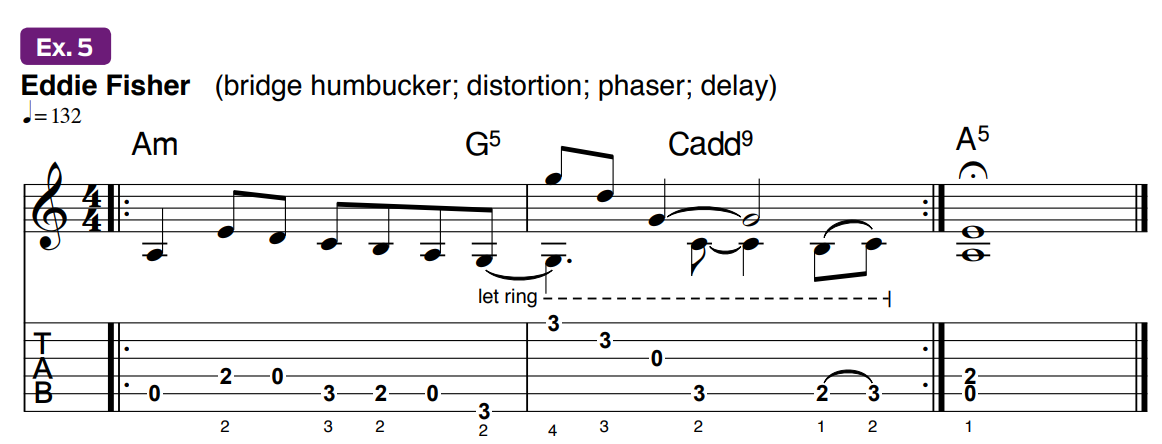
While bar 2 is chordal by nature, the first measure presents its tonality via a single-note phrase based on the A natural minor scale (A, B, C, D, E, F, G).
BLUES-BASED RIFFS
Next, let’s explore the bluesy potential of open position.
First up is Ex. 6 (Blues Rock Boogie), a tried-and-true boogie riff that services E5, A5 and D5 changes.
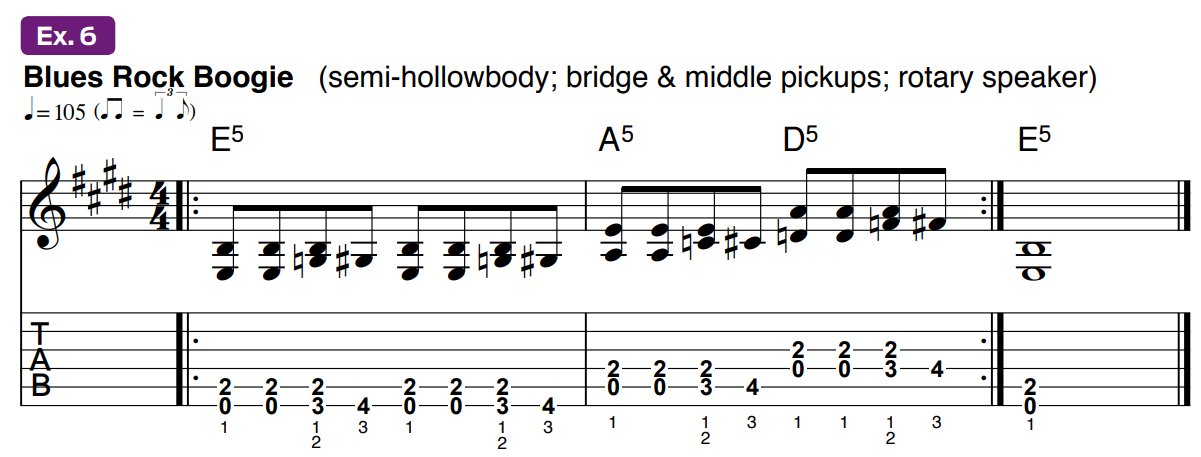
The hidden beauty of these figures is that they could be used to drive major portions of 12-bar blues progressions in several keys, with E, A and D being the likely subjects.
Ex. 7 (Muddy Doors) is a fingerstyle example inspired by Robby Krieger’s riffing in the Doors’ “Love Me Two Times,” with a dose of Johnny Kidd’s “Shakin’ All Over” and Muddy Waters’ classic “Mannish Boy” thrown in for good measure.
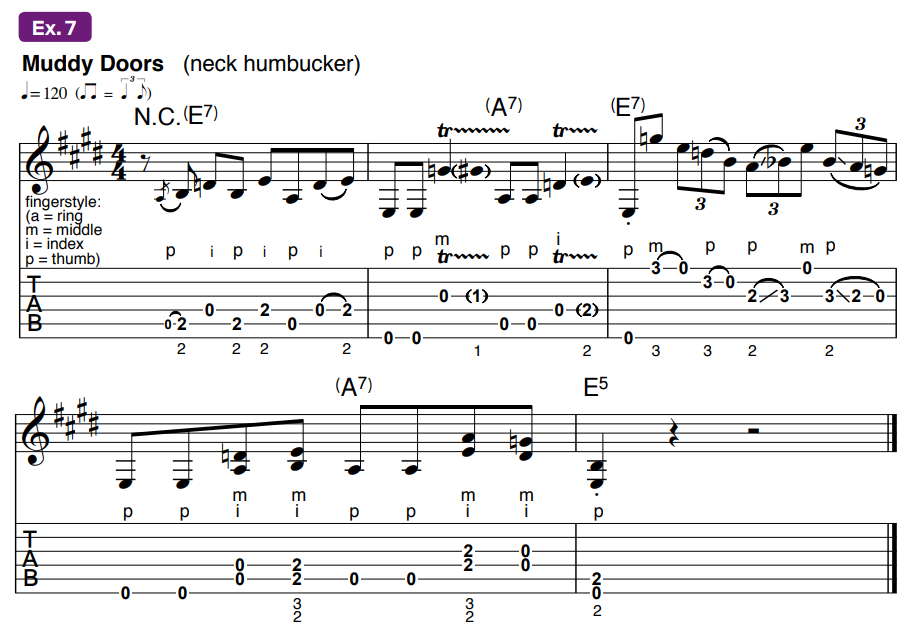
Those trills in bar 2 are alone worth the price of admission. Basically a rapidly repeating series of hammer-ons and pull-offs, open-position trills can take some mindful effort to master.
If your index finger isn’t cutting the mustard, try using your middle finger for the G-string trill, and remember to pull the string slightly downward, in toward your palm, as you release each pull-off.
Ex. 8 (Peter by the Ocean) is a blend of old and new.

Based on the ultra-cool main riff of Henry Mancini’s “Peter Gunn,” measure 1 bleeds into a slice of the modern pop hit “Cake by the Ocean,” by DNCE, featuring guitarist JinJoo Lee.
Ex. 9 (Memphis Jimi Young) closes this section out with a concoction that is just about equal parts “Memphis, Tennessee” (Johnny Rivers’ version), “Hey Joe” (Jimi Hendrix) and “Mr. Soul” (Neil Young with Buffalo Springfield).
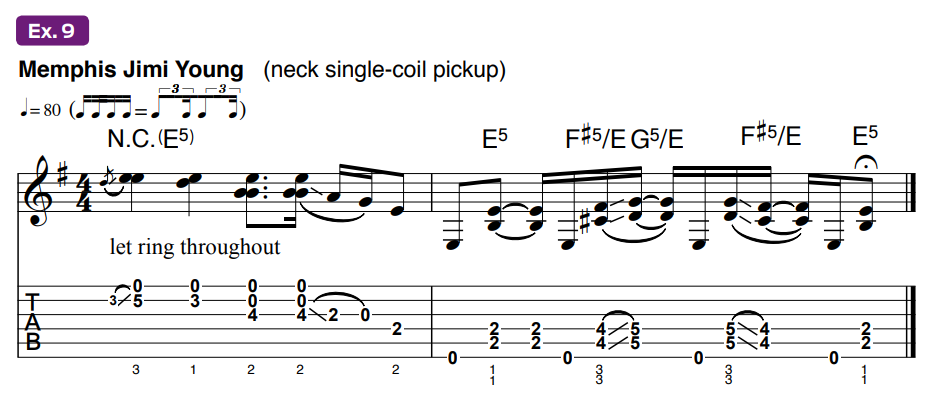
LET’S GET HEAVY
Ex. 10 (Slashy/DC) gets off to a rip-roaring start with a rapidly picked rendition of Slash’s delay-soaked opening riff from Guns N’ Roses’ “Welcome to the Jungle.”

A set of quick power-chord trade-offs inspired by AC/DC’s “Back in Black” closes the passage.
Follow the fingerings, slides and pull-off directions in the first part of this riff example.
Ex. 11 (Helter Skelter Man) harkens back to the 1960s with a pair of aggressive riffs fashioned after the Beatles’ “Helter Skelter” and Johnny Rivers’ “Secret Agent Man.”
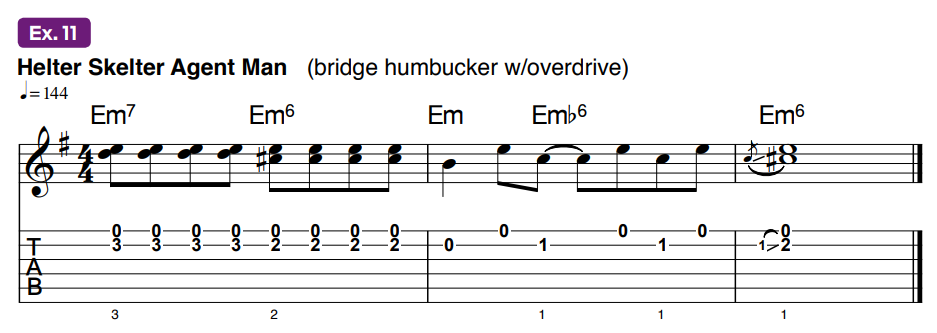
Though they may seem tame by today’s standards, riffs like these hit hard and heavy back in the day.
Ex. 12 (Blink Don’t Run) is a fun one that melds ’90s pop punk (“Dammit” by Blink-182) with the “punk for its time” ’60s garage-band surf (an edgy version of “Walk, Don’t Run” by the Ventures).

Try using all downstrokes to cop that punky attitude.
Kicked off with a move reminiscent of Kenny Loggins’ “Footloose,” Ex. 13 (Living, Tripping, Heartbreaking) proceeds to morph the essence of two classic Jimmy Page riffs (Led Zeppelin’s “Heartbreaker” and “Living Loving Maid”) together in a recognizable rhythmic concoction.

Ex. 14 (Long, Cool Run to Cobain) is a jangly amalgamation of arpeggiated riffs from different decades.

Kurt Cobain’s “Come As You Are” is the inspiration of the opening passage, which segues to a rendition of the ’70s hit “Long Cool Woman (in a Black Dress)” by the Hollies.
The ’80s is represented in the final bar, which is a nod to “Run to You,” by Bryan Adams.
ACOUSTIC AND ECLECTIC
Let’s take a look at a couple of acoustic guitar riffs.
Ex. 15 (Crash Into My Eyes) is inspired by the rhythms and chord structure of Peter Gabriel’s “In Your Eyes” and “Crash Into Me” by the Dave Matthews Band.
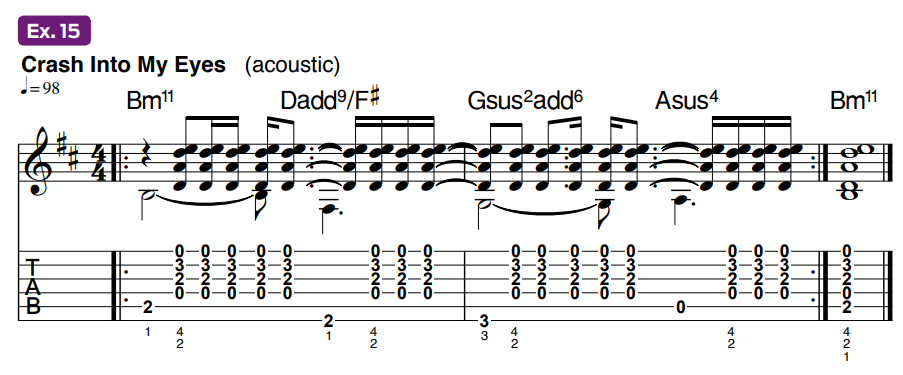
Notice how the open Dsus2 chord grip (voiced, low to high, D A D E) is sustained through the entire example.
The shifting bass notes dictate the true harmony of the progression.
Ex. 16 (Daniel’s Bird Song) is fashioned after the intervallic structure of Elton John’s “Daniel” and Paul McCartney’s “Blackbird,” from the Beatles’ White Album.
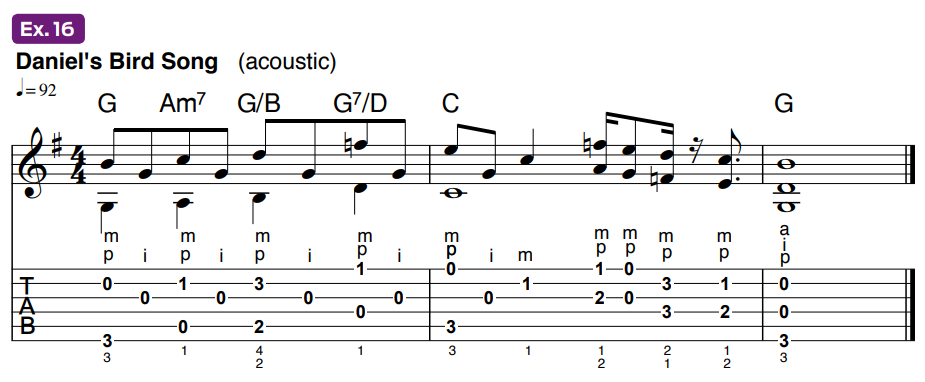
The first passage is based on 10th intervals (an octave plus a major or minor 3rd), with a droning open-G string, while the ending segues to 6th intervals.
Follow the fretboard fingering religiously for maximum sustain throughout.
Ex. 17 (Josie Wonder) is a bit of a departure from the norm.
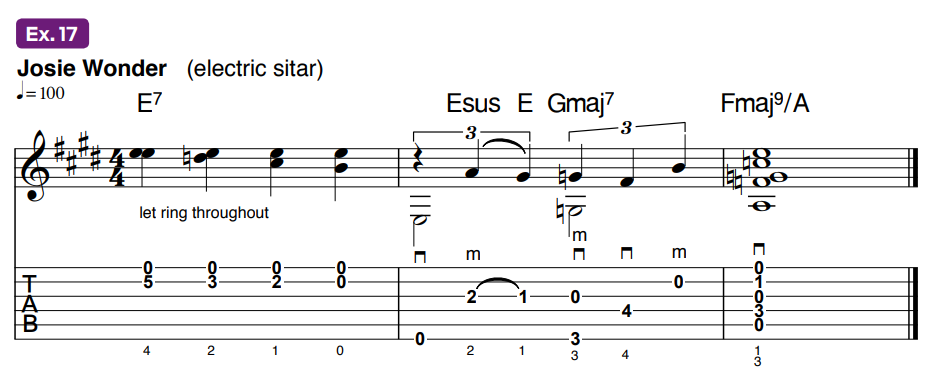
Bar 1 brings to mind the electric sitar riff from Stevie Wonder’s “Signed, Sealed, Delivered,” and the answering phrase that follows is based on Larry Carlton’s signature riff in Steely Dan’s “Josie.”
SOUTHERN REGIONS
Ex. 18 (Honky Eagles) is a southern-rock styling that blends Bernie Leadon’s intro lick in the Eagles’ “Take It Easy” with Keith Richards’ signature riff from the Rolling Stones’ “Honky Tonk Women.”
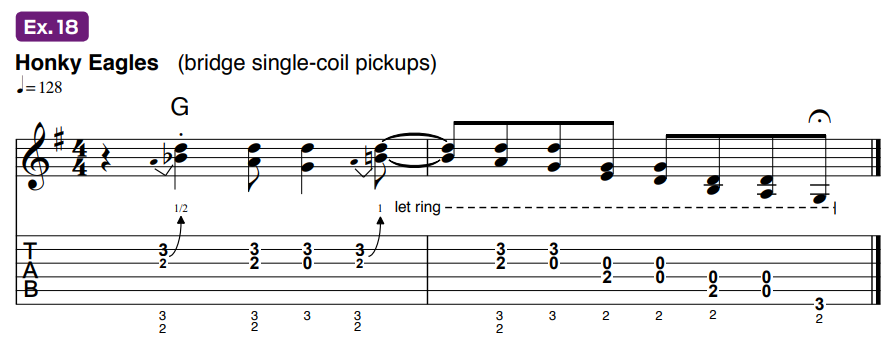
There’s nothing easy about that 2nd-fret whole-step bend on the G string. Light-gauge strings are the answer to these type of bends.
Ex. 19 (Banjo Days) is a hot country example of the banjo-roll technique. This can be a difficult style to master.
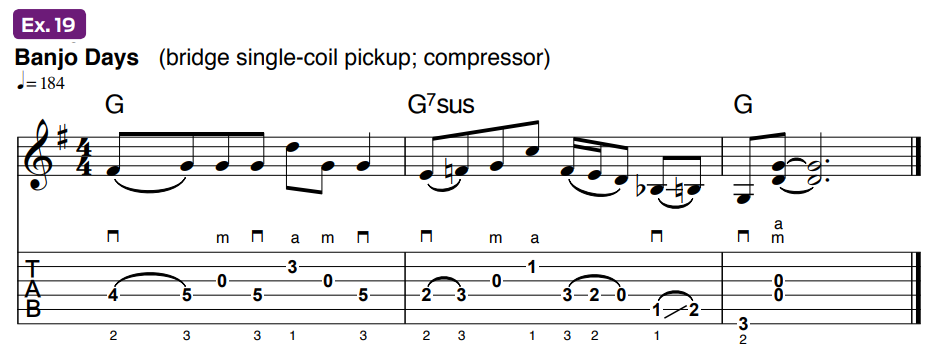
Practice it slowly with a metronome, gradually upping the tempo when you can play consistently in time.
Last, but not least, we come to Ex. 20 (Dance to the Yes Man).
This feisty example is inspired by the dazzling riffs from “Dance to the Music” by Sly and the Family Stone (Freddie Stone on guitar) and “Siberian Khatru” by Yes (featuring Steve Howe).
